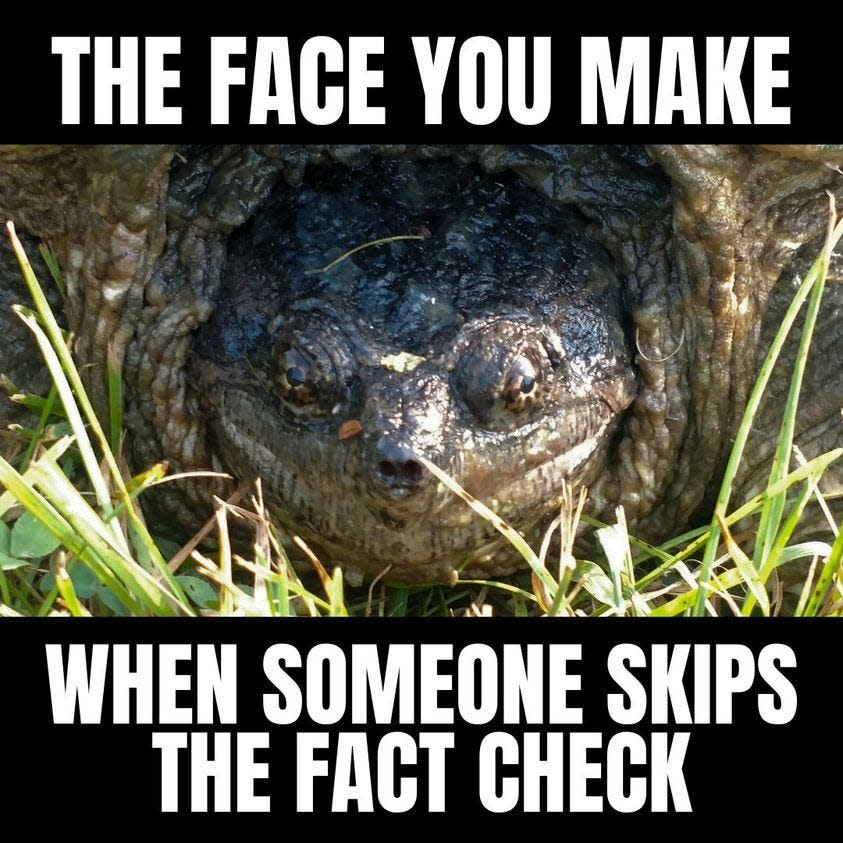Colwell: It was on Facebook, so it must be true
Are Indiana’s mainstream media covering up dangers to Hoosiers from a killer snapping turtle, 9 feet in diameter, that decapitated a human victim in Lake Monroe near Bloomington? And could this type of terrible turtle be found also in the St. Joseph River and on the banks of the Wabash?
No. And no.
But a Facebook post on July 16 told of Purdue University forensic scientists announcing that decapitated human remains discovered in Lake Monroe “appear to have been the result of a gruesome attack by a giant snapping turtle” measuring an estimated 9 feet and being around 300 years old.
The satirical account went viral, over 14,000 shares in the first days, with hundreds of comments, some calling it “fake news,” others taking it seriously as a reason to avoid Lake Monroe.
Stories in the news media quickly pointed out that the quoted Purdue scientist, Dr. Eric Paddlejack, doesn’t exist. A detailed account of all the rest that was wrong appeared in a story in the Bloomington Herald-Times by Rachel Smith. Her story also appeared in The Tribune.
That story and others in the mainstream print and broadcast media reported assurances from the Monroe County coroner that no decapitated remains had been found in Lake Monroe and statements by Indiana Department of Natural Resources officials that there is no such thing as a 9-foot, 300-year-old snapping turtle in Lake Monroe or anywhere else.
Kevin Goodman, author of the post, confirmed it was satire. He said he posted it on his personal Facebook page with intent that it be reviewed by “a handful of people” who knew he was working on a satirical piece about man-eating snapping turtles for possible submission to “The Onion,” famed for its humorous satire.
There was no malicious intent. Goodman quickly added a disclaimer that it was not an actual news story and was written as satire.
And the viral spread of the story of a killer turtle did no serious harm. Sure, some believers in whatever is in social media — and never seeing or not believing clarifying truth in the news media — could skip a trip to Lake Monroe. Too bad. Nice place. Lots of boats never attacked by Jaws or an angry turtle.
But this example of the untrue that goes viral illustrates the dangers of misinformation in social media that is planted with malicious intent:
∙ Chinese misinformation promoting conspiracy theories of the coronavirus originating here.
∙ Russian misinformation designed to sway our election choices.
∙ Domestic misinformation seeking to demonize political foes or segments of the population.
Clearly, many Americans fall for malicious misinformation, whether from Facebook, blogs, the dark web or other sites. They choose to believe even some of the strangest claims, theories and fake news rather than facts.
In fact, belief of misinformation seems sometimes to be solidified by contradictory information in the news media.
What if Indiana’s mainstream media (or lamestream, if you prefer) were covering up dangers to Hoosiers from that killer snapping turtle?
Well, then Dr. Paddlejack would be right in saying it’s rare for snapping turtles to inflict life-threatening injuries, “but in this case, the size and age of the turtle suggest an aggressiveness that is beyond ordinary.”
It would be the Monroe County coroner who didn’t exist, or if real, was hiding the truth in insisting that nobody was decapitated by a nine-foot turtle or any other turtle.
It would mean those little snapping turtles you see can grow into monsters worthy of Loch Ness comparison.
It would mean staying out of the water at Lake Monroe or at any other lake or river or pond where a deadly turtle could snap off your head.
What do you think? Could the story of the Lake Monroe turtle be true? It was, after all, on Facebook.
Jack Colwell is a columnist for The Tribune. Write to him in care of The Tribune or by email at jcolwell@comcast.net.


This article originally appeared on South Bend Tribune: Many Americans choose to believe strange claims, theories and fake news.

